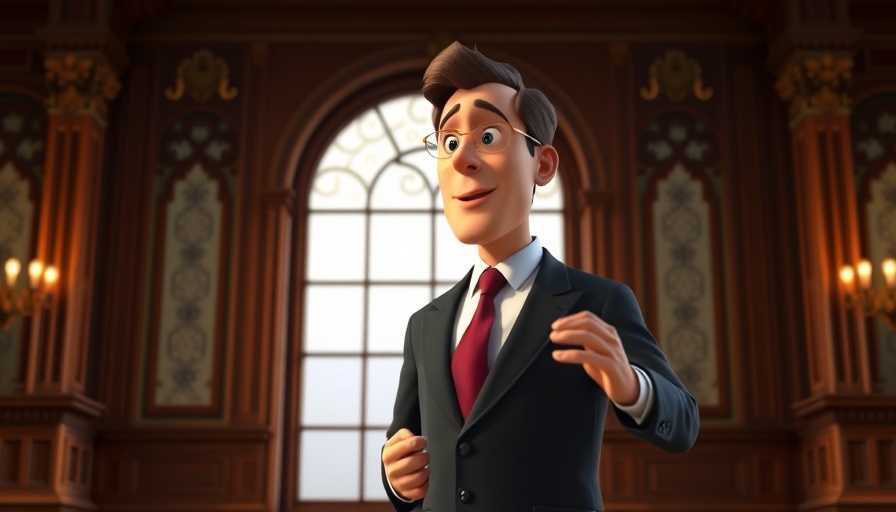
Shashi Tharoor's Ghibli AI Post Sparks a Cultural Debate
In a remarkable intersection of politics, pop culture, and technology, Congress MP Shashi Tharoor has captured the internet’s imagination by embracing AI-generated imagery in the whimsical style of Studio Ghibli. Known for his eloquent speech and sharp wit, Tharoor's social media post showcased charming illustrations of himself that fans claimed were reminiscent of beloved Ghibli films. Although the images were originally created by fans and supporters, Tharoor took to Twitter to share them, humorously stating, “Didn’t even know what Ghibli was till now, but consider me officially Spirited Away by this newfound revelation!”
The AI Trend: Art vs. Authenticity
This joyous embrace, however, did not come without controversy. The rapid advancement of AI in creative spaces has sparked debates surrounding authenticity and creativity in art. While many appreciated the delightful visuals and humor in Tharoor’s post, critics pointed out that Hayao Miyazaki, co-founder of Studio Ghibli, has voiced disapproval regarding AI-generated art. For Miyazaki, whose works emphasize hand-drawn animation and the human touch, the encroachment of AI into artistic realms presents a challenge to traditional forms of expression. This tension highlights a critical dialogue on the value of human creativity in an age increasingly dominated by machine-generated content.
Public Reaction and Emotional Responses
Tharoor’s post quickly amassed over 53,000 likes, revealing a divide among viewers. Supporters celebrated his ability to stay relevant in both the 'real and AI worlds,' praising his fun engagement with digital culture. Conversely, skeptics raised concerns about the moral implications of AI in art, suggesting that it may diminish the emotional depth found in hand-drawn animation. This variation in responses illustrates a broader societal struggle to adapt to technological changes while retaining the essence of originality. The ease of access to AI tools has democratized creativity, allowing individuals to experiment and innovate, though it also raises questions about the value of traditional artistry.
Insights into AI's Role in Culture
AI’s integration into the artistic sphere is just one manifestation of its broader influence on digital culture. As technologies advance, it invites us to reconsider our definitions of creativity and artistry. Whether through generating illustrations or composing music, AI technologies like OpenAI's tools are reshaping how artists create and interact with their audiences. However, the emotional reactions toward these innovations are pivotal in shaping future interactions with AI. Understanding these dynamics can help us navigate the evolving conversation around technology and creativity.
Future Trends in AI and Artistry
As AI continues to evolve, it is essential to consider what the future holds for artistic expression. The rise of AI-driven platforms may lead to increasingly hybrid forms of art, where human and machine collaboration becomes commonplace. Innovations such as AI-powered animation tools or music composition software could redefine the artistic landscape, potentially leading to new genres and styles. However, these advancements will likely also ignite further debate regarding copyright issues, ownership of creativity, and the cultural significance of machine-created versus human-made art.
The Value of Engaging with AI in Art
For enthusiasts of both technology and art, Tharoor's engagement with AI-generated images serves as an example of navigating this intricate landscape. This dialogue not only fosters creativity but also educates individuals about the potential impact of AI on various sectors, from entertainment to education. As society moves forward, the continued exploration of AI’s capabilities will be crucial in reshaping cultural narratives and promoting inclusive discussions around technological advancements.
In conclusion, Shashi Tharoor’s playful interaction with AI augments the ongoing conversation about technology’s role in art and society at large, reminding us that adaptability in the face of change is essential. Embracing innovation while respecting traditional values will guide our creative futures.
 Add Row
Add Row  Add
Add 




 Add Row
Add Row  Add
Add 

Write A Comment